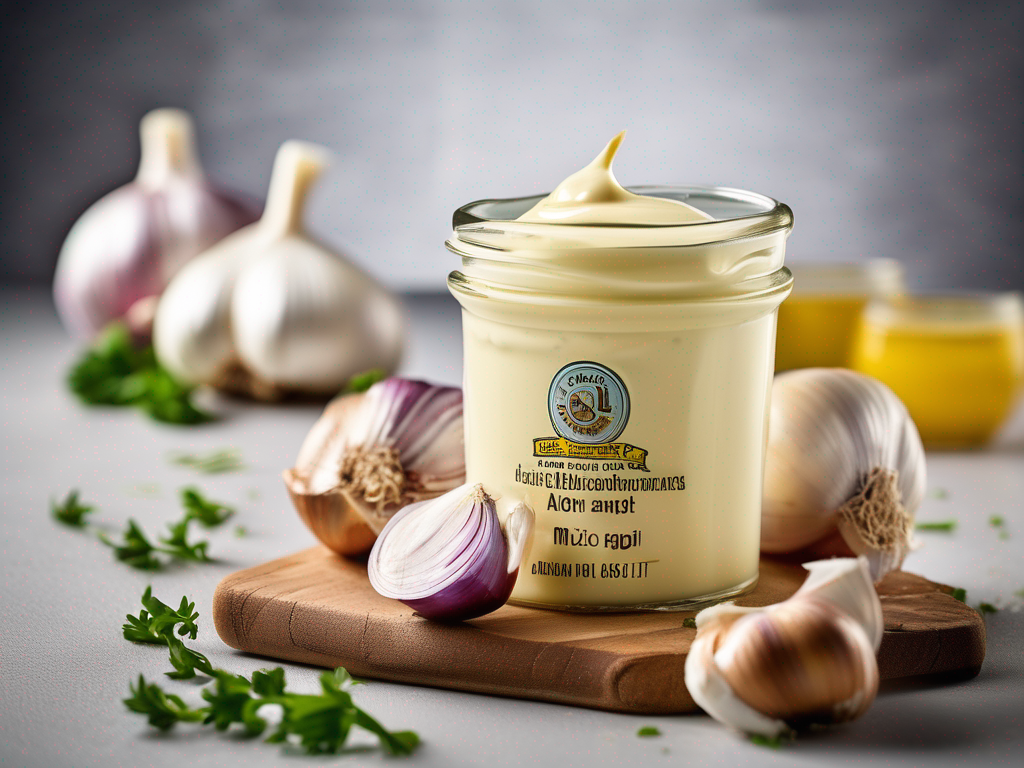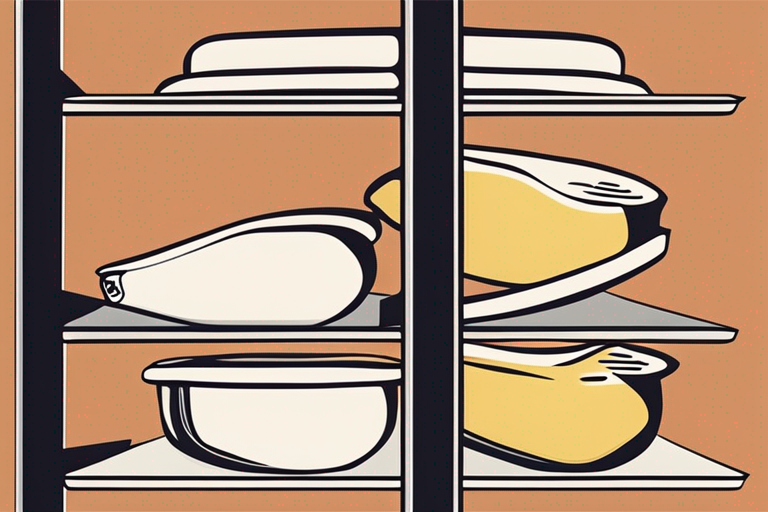
What Happens if Aioli Garlic Mayo is Stored at Room Temperature?
Get Your Free Food Safety Cheat Sheet
30 most common foods with instant answers. Print it and stick it on your fridge—completely free!
What Happens if Aioli Garlic Mayo is Stored at Room Temperature?
Aioli garlic mayo is a delicious and versatile condiment that can add a burst of flavor to sandwiches, salads, and other dishes. However, it is important to store aioli garlic mayo properly to ensure its safety and quality. In this blog post, we will discuss what happens if aioli garlic mayo is stored at room temperature, why it is important to store it correctly, and practical tips for safe storage. (Aioli garlic mayo)
Why Proper Storage of Aioli Garlic Mayo is Important
Aioli garlic mayo is made with ingredients such as garlic, eggs, oil, and vinegar, which are all prone to bacterial growth if not stored properly. When aioli garlic mayo is stored at room temperature, the risk of bacterial contamination increases significantly. Here are some reasons why proper storage of aioli garlic mayo is crucial:
-
Bacterial Growth: When aioli garlic mayo is stored at room temperature, the warm environment provides an ideal breeding ground for bacteria such as Salmonella, E. coli, and Listeria.
-
Spoilage: Storing aioli garlic mayo at room temperature can cause it to spoil more quickly, leading to changes in taste, texture, and color.
-
Food Safety: Consuming aioli garlic mayo that has been stored at room temperature can increase the risk of foodborne illnesses, especially for vulnerable populations such as children, the elderly, and individuals with weakened immune systems.
Optimal Storage Conditions for Aioli Garlic Mayo
To ensure the safety and quality of aioli garlic mayo, it is important to store it properly. Here are some tips for optimal storage:
Refrigeration
-
Refrigerate Promptly: After opening a jar or container of aioli garlic mayo, refrigerate it promptly to slow down bacterial growth.
-
Temperature: Store aioli garlic mayo in the refrigerator at temperatures below 40°F (4°C) to maintain its freshness and prevent spoilage.
-
Cover Tightly: Make sure to tightly cover the jar or container of aioli garlic mayo to prevent air and moisture from entering, which can lead to contamination.
Shelf Life
-
Check Expiration Date: Always check the expiration date on the packaging of aioli garlic mayo and discard it if it has expired.
-
Use-by Date: Follow the manufacturer's recommendations for the use-by date of aioli garlic mayo to ensure its safety and quality.
Hygiene
-
Clean Utensils: When serving aioli garlic mayo, use clean utensils to prevent cross-contamination and bacterial growth.
-
Avoid Double Dipping: To prevent contamination, avoid double-dipping utensils or spreading crumbs into the aioli garlic mayo container.
Risks of Consuming Aioli Garlic Mayo Stored at Room Temperature
Consuming aioli garlic mayo that has been stored at room temperature can pose several risks to your health. Here are some potential consequences:
Foodborne Illness
-
Bacterial Contamination: Storing aioli garlic mayo at room temperature increases the risk of bacterial contamination, which can lead to foodborne illnesses such as Salmonella, E. coli, and Listeria.
-
Symptoms: Foodborne illnesses can cause symptoms such as nausea, vomiting, diarrhea, abdominal pain, fever, and dehydration.
-
Risk Groups: Certain populations, including children, the elderly, pregnant women, and individuals with weakened immune systems, are at higher risk of developing severe complications from foodborne illnesses.
Spoilage
-
Texture and Flavor Changes: Aioli garlic mayo stored at room temperature may undergo changes in texture, flavor, and color, making it unappetizing and possibly harmful to consume.
-
Mold Growth: If aioli garlic mayo is left out at room temperature for an extended period, mold growth may occur, indicating spoilage and potential health risks.
Conclusion
In conclusion, storing aioli garlic mayo at room temperature can pose significant risks to your health due to bacterial contamination, food spoilage, and potential foodborne illnesses. To ensure the safety and quality of aioli garlic mayo, it is crucial to refrigerate it promptly, follow proper hygiene practices, and adhere to the manufacturer's recommendations for storage and use. By storing aioli garlic mayo correctly, you can enjoy this flavorful condiment while minimizing the risk of food safety issues. Remember, when in doubt, throw it out!
For more information on aioli garlic mayo and other food safety tips, visit [here](/food/aioli garlic mayo). Stay safe and enjoy your meals responsibly! (Aioli garlic mayo)

Authoritative Food Safety References
These agencies and university labs inform every tip and health precaution we publish.
USDA FoodKeeper – Cold Storage Guidelines
Official refrigerator, freezer, and pantry timelines maintained by the U.S. Department of Agriculture.
Visit USDA FoodKeeperFDA Produce Safety Rule & Grower Guidance
Field-to-fridge handling practices that prevent contamination of fruits, vegetables, and leafy greens.
Visit FDA Produce SafetyCDC Foodborne Illness Prevention Hub
Surveillance-backed guidance on pathogens, symptoms, and steps to reduce foodborne illness risk.
Visit CDC Food SafetyUC Davis Postharvest Technology Center
University research detailing optimal storage atmospheres for produce after harvest.
Visit UC Davis PostharvestPenn State Extension – Home Food Preservation & Safety
Peer-reviewed extension bulletins on safe canning, chilling, and reheating practices.
Visit Penn State ExtensionHow long can Aioli Garlic Mayo be kept in the refrigerator?
What are the risks of consuming Aioli Garlic Mayo that has been stored improperly?
Can Aioli Garlic Mayo be frozen for long-term storage?
How can I tell if Aioli Garlic Mayo has gone bad?
Get Your Free Food Safety Cheat Sheet
30 most common foods with instant answers. Print it and stick it on your fridge—completely free! Want more? Upgrade to the complete guide with 70+ foods.
Scan your food directly and get instant safety info using our AI-powered camera feature.